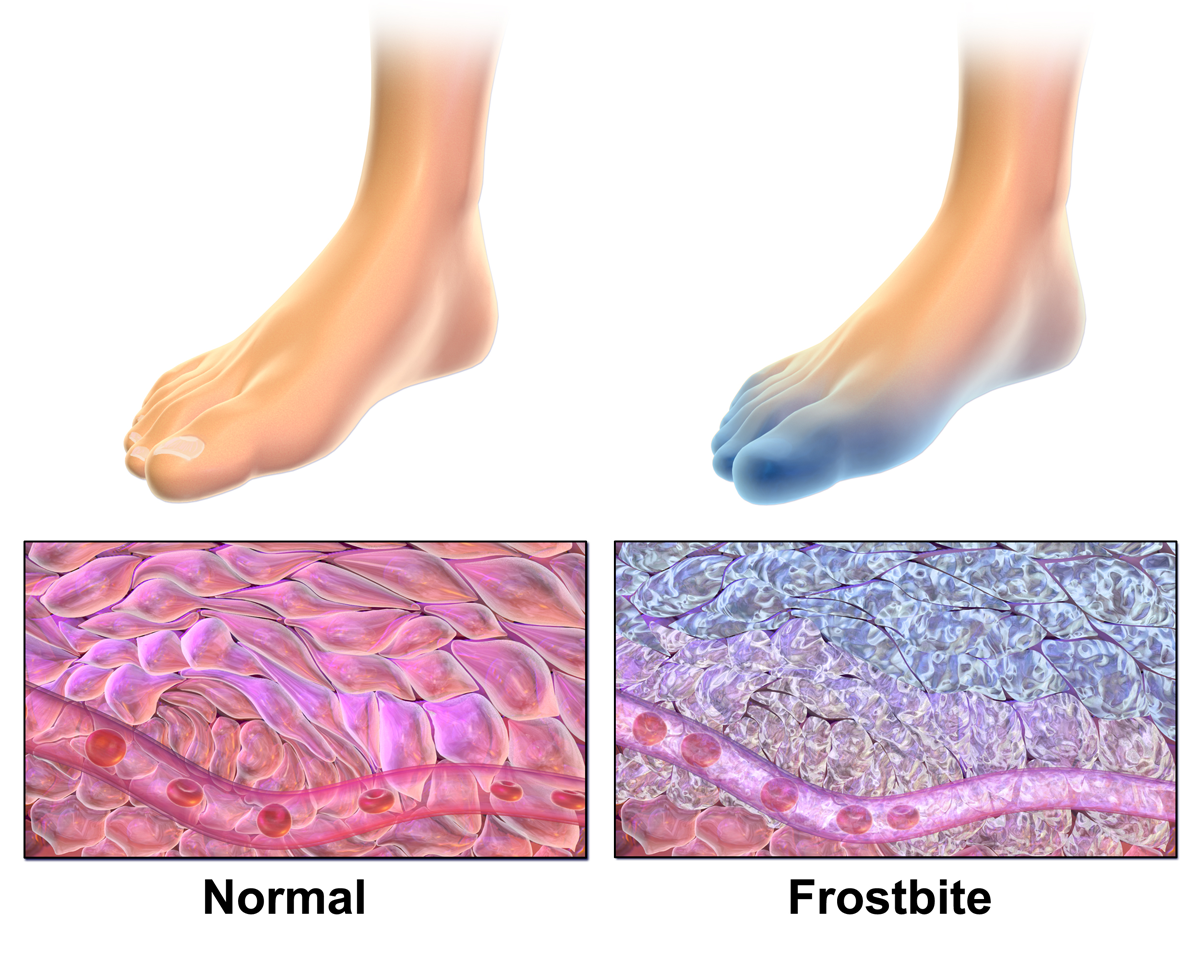
What exactly is frostbite? It sounds chilling.
Well, it is a condition that happens with the freezing of the skin and underlying tissues. It starts when your skin becomes very cold and red, then numb, hardened and white or pale.
Frostbite happens most on your fingers, toes, nose, ears, cheeks and chin. You are most susceptible to frostbite when you are outside in cold, windy weather with exposed skin, although it can happen to skin that’s covered by clothing.
What are the symptoms of frostbite?
Following are symptoms of frostbite:
- Very old skin and a feeling that something is prickling you
- Numbness
- Red, white, bluish-white or grayish-yellow skin colors
- Hardened or waxy looking skin
- Extreme joint and muscle stiffness that causes you to fall or not move correctly
- In more severe cases, your skin will blister after it is rewarmed
What are the stages of frostbite?
- Frostnip – The first stage of frostbite is called frostnip. It doesn’t cause permanent damage to your skin. Frostnip can be treated with first aid, like rewarming your skin. Other levels are much more serious and can damage skin, tissues, muscles, bones and even nerves.
- Superficial frostbite – The second stage starts when reddened skin that turns white or pale. The skin may still feel soft, but some ice crystals may start to form in the tissue. If your skin starts to feel warm, that’s a sign of serious frostbite. If you rewarm your skin when you have superficial frostbite, the surface of your skin may appear blue or purple. You also might feel stinging, burning and swelling. A fluid-filled blister might form between 24 and 36 hours after rewarming the skin.
- Severe (deep) frostbite – As it gets worse, it has an impact on all layers of the skin, including the underlying tissues. You may become so numb that you lose all sensation of cold, pain or discomfort on the parts of your body suffering from frostbite. This is also when your joints and muscles stop working, and large blisters will form 24-48 hours after your skin is rewarmed. Then, the worst part, your frostbitten skin turns black and hard because the tissue dies.
When should you seek medical attention?
Here are some times when you should definitely get to a doctor if you have frostbite:
- When your skin turns white or pale, or if you experience extreme numbness or blistering
- If the pain levels in the affected area increase, or if there’s swelling, redness or discharge.
- If you’re running fever
Frostbite can also be a sign of hypothermia, which happens when your body loses heat faster than it produces heat. Seek emergency medical attention if you have the following symptoms:
- Intense shaking or shivering
- Slurred speech
- Drowsiness and loss of coordination
